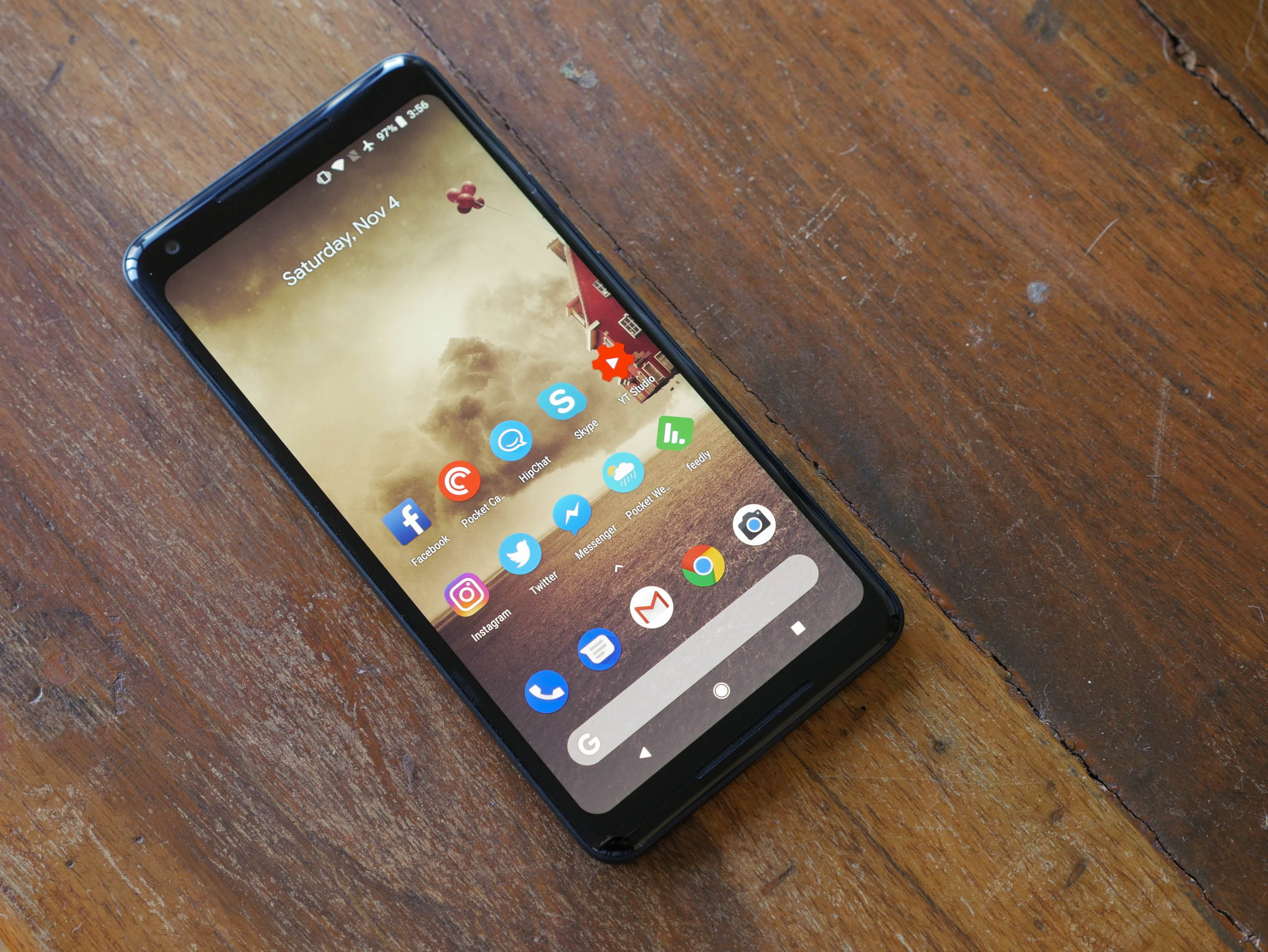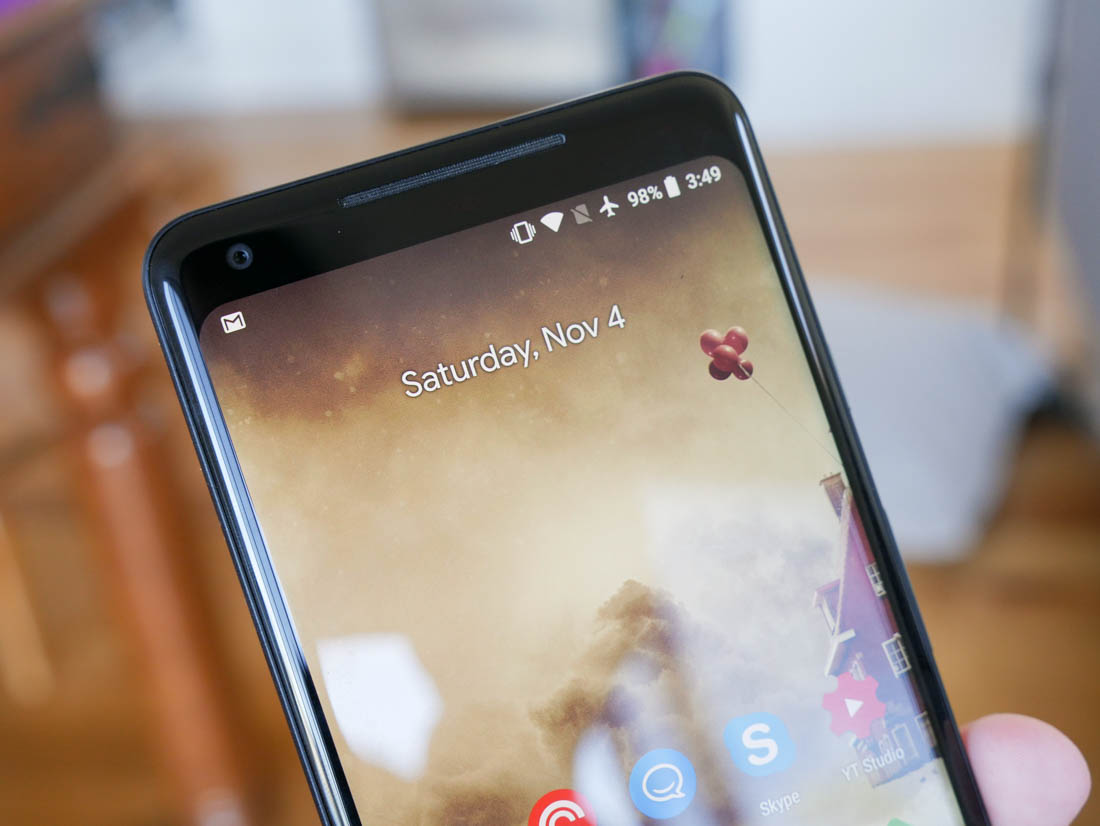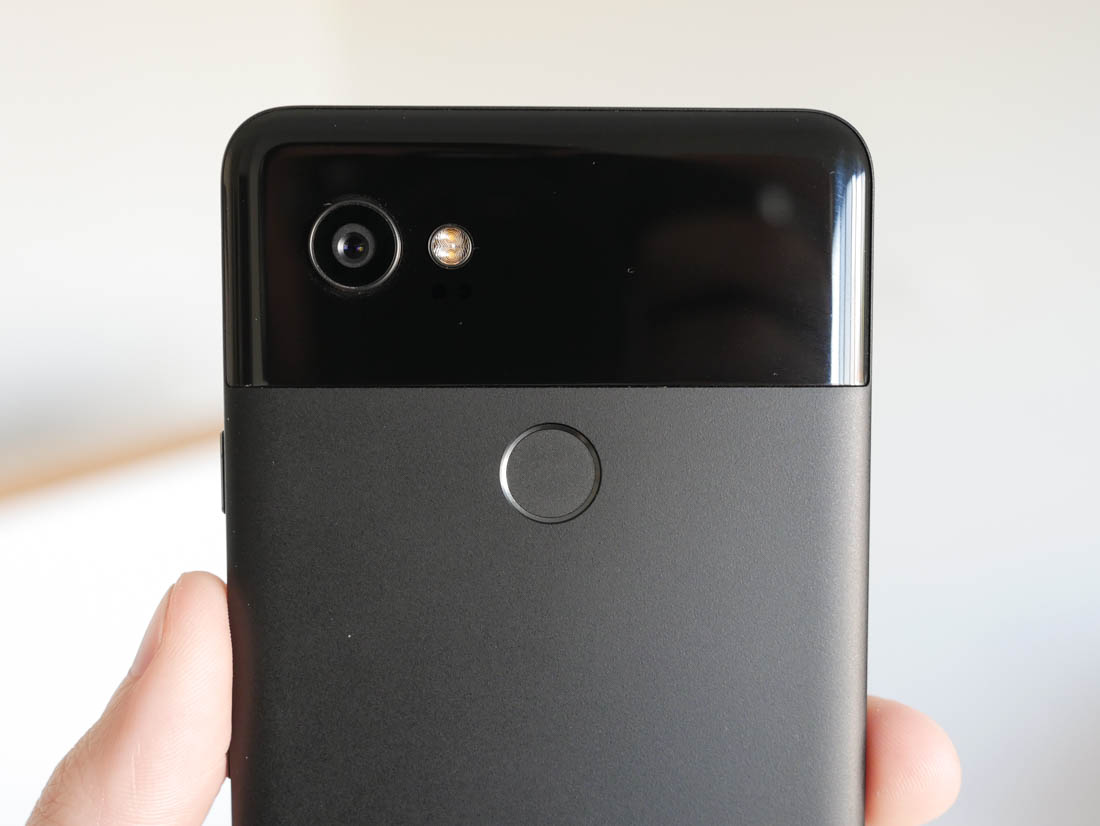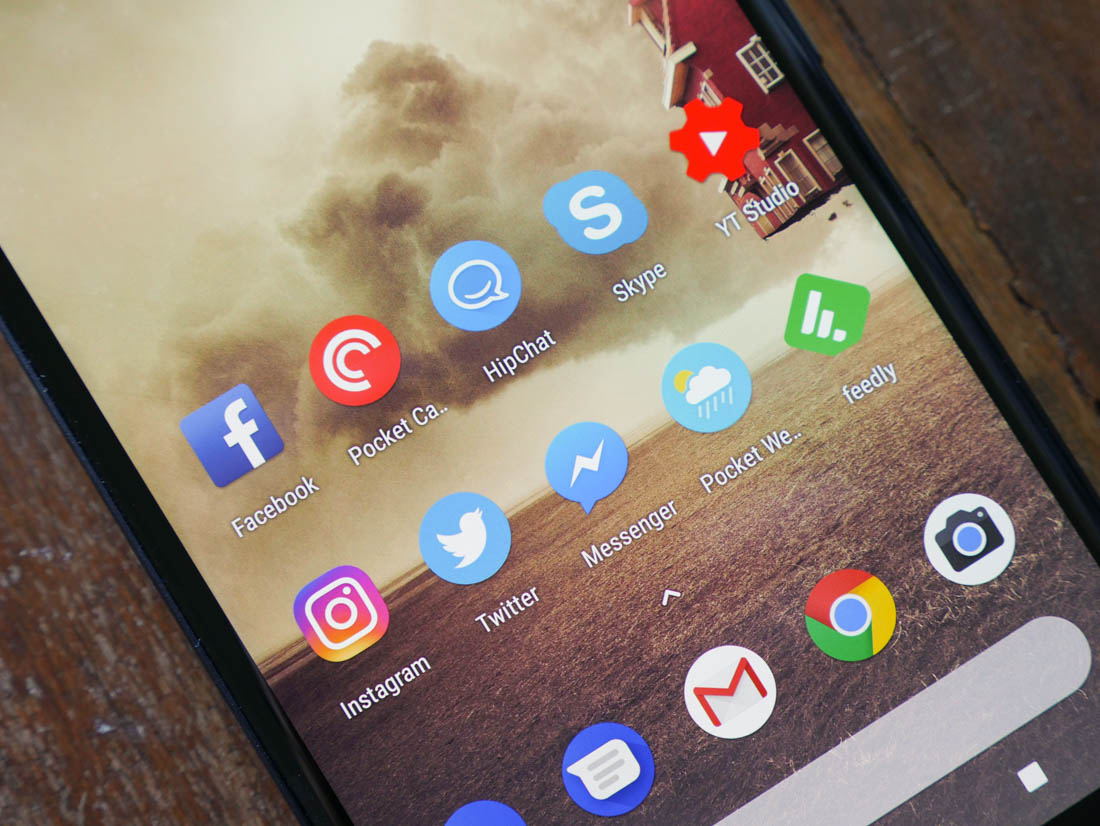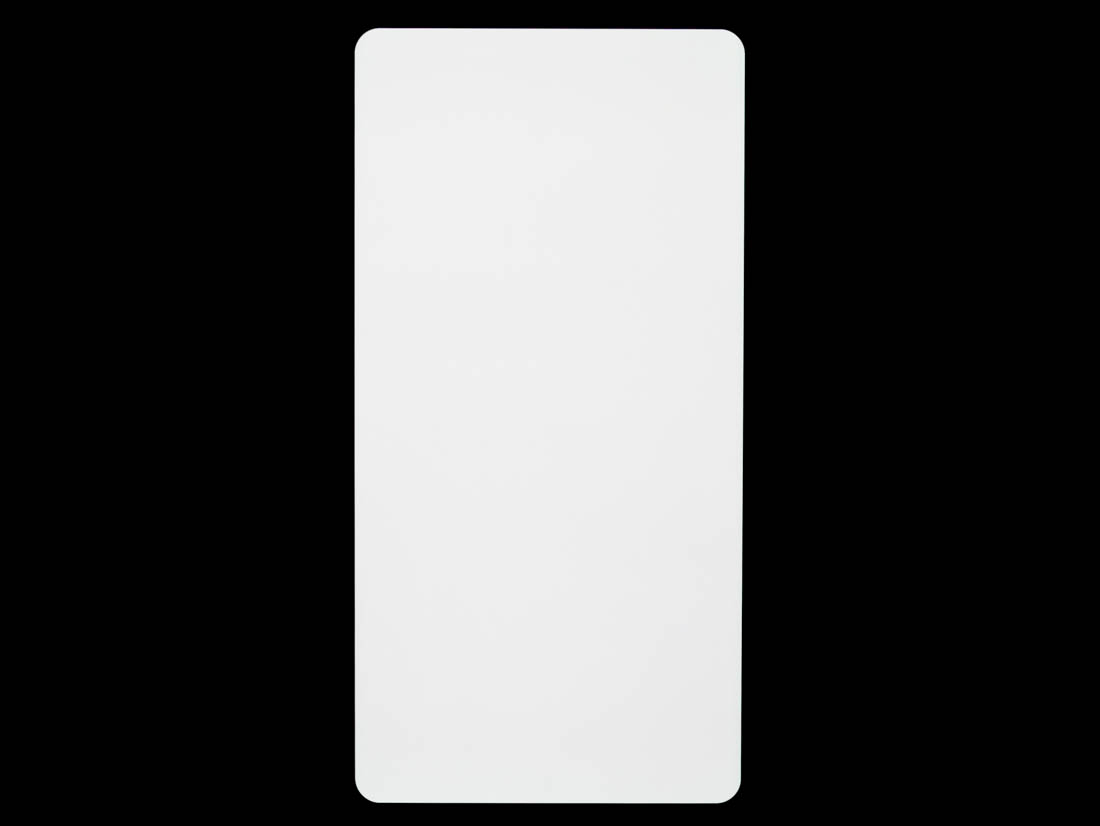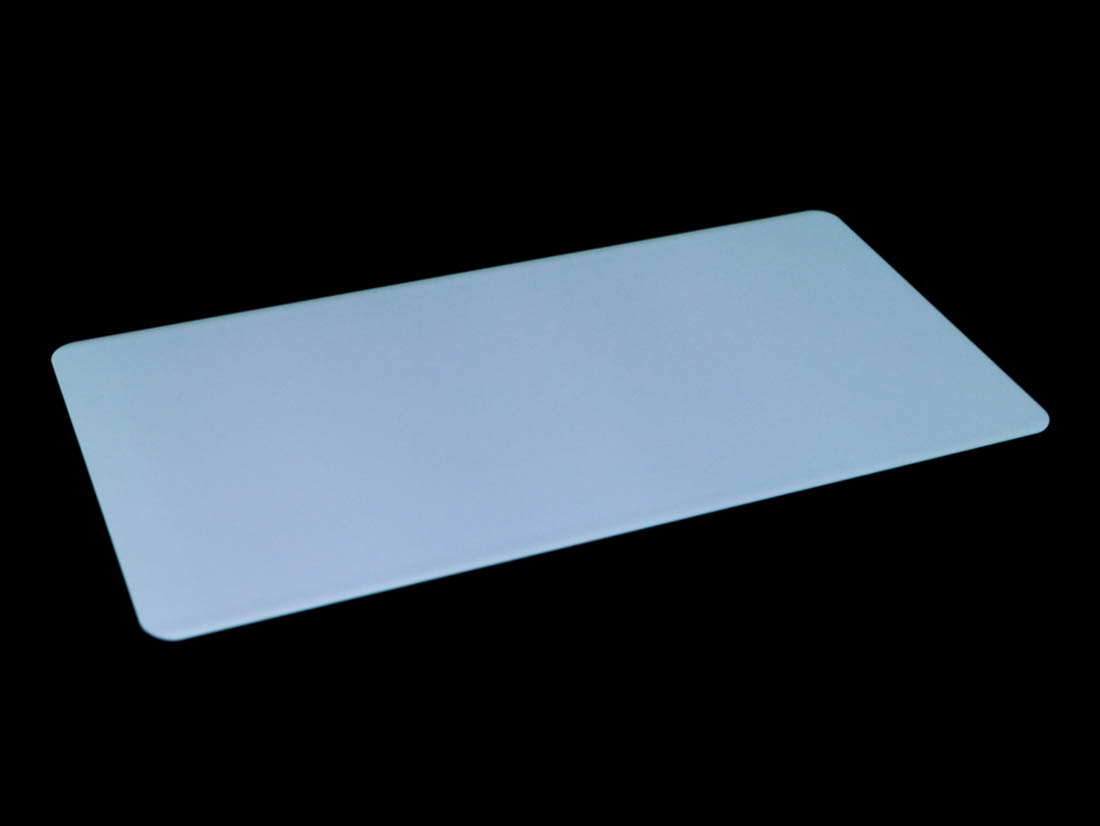There has been no shortage of controversy around Google's latest phone, the Pixel 2 XL since it launched less than a month ago. While initial reviews painted the Pixel 2 line in a highly positive light, days later, the Pixel 2 XL's display was dominating discussion around the internet. Problem after problem kept appearing, ranging from poor viewing angles to burn in, with Google scrambling to respond.
With the display blunder evolving at rapid pace and some kind of response expected at any moment, I decided to hold off on publishing my review of the Pixel 2 XL until the situation had settled. This also gave me more time to analyse the phone, in particular its display, and present my opinion based on facts. So if you want the full verdict on why the Pixel 2 XL's display is not up to scratch, and what (if anything) can be improved with software, check out the display section further down this page.
But aside the phone's display, there's a lot of great technology packed into the Pixel 2 XL. This phone is genuinely close to being the perfect Android device that it's painful to see its display holding it back from perfection. I still think that the Pixel 2 XL is a phone you should consider buying.
Let's talk basics first.
The Pixel 2 XL has a 6.0-inch 1440 x 2880 p-OLED display with narrow bezels: the first and only phone in Google's line-up with an impressive screen to body ratio. It's powered, unsurprisingly, by the Snapdragon 835 SoC, 4GB of RAM and either 64 or 128 GB of internal storage. There's a 12.2-megapixel camera on the rear with an f/1.8 lens and OIS, combined with an 8-megapixel sensor on the front. And the battery? 3520 mAh.
All this hardware has led to a very expensive smartphone, too. The Pixel 2 XL starts at $849 outright for the 64GB model, or a whopping $949 if you want the 128GB model. You're essentially paying an extra $200 for the larger display, as the smaller Pixel 2 packs near-identical hardware for $649.
Design
On the design front, there's no doubt the Pixel 2 XL is the best-looking handset ever released by Google. I thought last year's Pixel was ugly, with fat bezels and an awkward glass slab on the rear. The Nexus 6P that came before it wasn't much better. The Pixel 2 XL is a far more refined handset though.
Yes, there is still the distinctive glass slab on the rear, but it's much better integrated into the design. The metal body feels excellent in your hands, and the matte coating makes it easy to grip. The edges are rounded on all sides, the seams between glass and metal on the front are tight, and in general this phone fits in the hand well. Plus, it just has that premium touch with a pleasant, modern, minimalist aesthetic that fits with Google's design strategy of late.
The Pixel 2 XL is reserved on the rear, but it's all party on the front. The 6.0-inch 18:9 OLED occupies most of the usable space, with a decent 76.4% screen to body ratio. Google has ticked all the boxes from a design perspective and even though the bezels aren't as small as competitors like the iPhone X and Galaxy Note 8, we like it.
As a stickler for detail, I did note the bezel is not even; it's 8.5mm on the bottom, and 12mm on the top, which makes the display look misaligned on the front panel. It's one of those things that you can't unsee when you first see it, so a note to Google here: perfect symmetry is best.
On the positive side, Google (or is it LG?) managed to cram stereo front facing speakers into the chassis, which makes it great for content consumption and gaming. The speakers are loud and decent for a smartphone.
While Google has included front-facing speakers, they've removed the headphone jack, which I personally dislike. There is still no good reason why a phone can't include both a 3.5mm audio jack and USB-C. You can still connect wireless headphones and USB-C headphones to a phone that has both USB-C and 3.5mm audio. Plus the whole USB-C to 3.5mm audio dongle situation is a garbage fire. I'm disappointed Google felt the need to make such a decision. Headphone ecosystem lock-in is becoming a real thing and that's such a shame.
It's no surprise the Pixel 2 XL has a fingerprint sensor on the rear, which has been standard for Google's last three phone generations. It's in the perfect position for easy use and in my opinion trumps many other fingerprint unlock implementations or face identification technology at this stage.
The Pixel 2 XL is water resistant, which is another necessary inclusion. Water resistance is one of those features that is basically required for a top-end smartphone these days. Don't use the Pixel 2 XL in saltwater though.
If you're wondering about whether the Pixel 2 XL or Pixel 2 is easier to hold and use, that crown does go to the smaller Pixel 2. Despite this, I had no trouble holding or operating the Pixel 2 XL and its large display, even in one hand. The screen is expansive but the small bezel size assists with usability.
As for more minor concerns, the camera does protrude slightly from the body, which could make it prone to scratching after a lot of typical use. There's no microSD expansion, which is typical of Google smartphones, though it would have been a nice inclusion considering adding an extra 64GB of internal storage costs $100.
Display: Hardware Issues
The most contentious aspect of the Pixel 2 XL is its display. Google has used an LG p-OLED panel (6.0", 2880 x 1440, 18:9 ratio), so it comes with all the associated benefits and issues with a taller aspect ratio. 16:9 videos, for example, will be shown with pillarboxing unless you zoom in the video. The good news is that most popular applications do a great job of supporting the extended aspect ratio these days.
Before discussing the issues with the Pixel 2 XL's display, I wanted to touch on some of the more basic properties and the things Google did correctly. As we're looking at OLED technology, the panel has essentially infinite contrast and deep blacks; deeper than any LCD can provide. The advantage is colors pop more than an LCD, and the display uses less power to produce blacks. On top of this, OLED panels are thinner, so the phones themselves can be thinner.
OLEDs also tend to have lower persistence and shorter pixel response times than LCDs, which makes them more suited to VR applications. Daydream VR is a key pillar of Google's Android and Pixel strategies, so it made sense for them to go OLED.
In some aspects, the display is pretty similar to other OLEDs. Due to its high pixel density (538 ppi) it uses a diamond subpixel arrangement, which has lower 'true' detail than the RGB stripe used in LCDs. This isn't a big deal at this sort of pixel density. Brightness is fairly typical as well, at 437 nits (100% APL). Samsung's flagship phones push higher than this with their sunlight modes, but most other OLED smartphones do not and tend to fall around the acceptable 400 nit mark. The Pixel 2 XL is not hard to view outdoors.
What is clear, though, is that LG's mobile OLED display technology is several generations behind Samsung, who is the market leader. There are several fundamental hardware issues with this panel - issues that Samsung has solved through years of tech refinement - which cannot be resolved through software updates.
Viewing the Pixel 2 XL straight on with a full white screen...
The first issue is the biggest: awful viewing angles. Even the slightest deviation produces a noticeable blue tint, such that you need to be viewing the display dead-on to receive an ideal experience. I'm not 100% sure whether this is an issue with the panel itself, or some other aspect to the display composition like a filter or other layer, but it's a hardware problem, and it's immediately obvious. Samsung solved this problem a long time ago, so LG needs to work hard to resolve this with their technology in the very next generation.
...and viewing it on an angle
Uniformity is an issue too. This isn't something I normally discuss in any smartphone review, because most OLEDs and LCDs are relatively even. The Pixel 2 XL's OLED has noticeable areas that are yellower/redder than others; on my review unit, the middle section is a slight too red relative to the top and bottom. This is most noticeable when the display is using a white background. I've seen some units that have worse uniformity than my display, too.
LG's OLED technology is grainer than Samsung's, too, which is a unique problem I haven't seen with many LCDs either. The grain presents itself as a slight speckling, almost dust-like, across the entirety of the display. It's most noticeable at a lower brightness and while viewing uniform white colors, like viewing the background of the Gmail or Twitter apps. Not as much of an issue in my opinion as the viewing angles or uniformity, but with the grain, the display doesn't feel as crisp or clear as most other flagship phone displays.
The last hardware issue that has seen widespread reports is burn in/image retention. My unit started suffering from this after about 4 days of usage, and it's only become worse after a few weeks. When viewing a full grey image, the outline of the navigation bar can clearly be seen. On the Pixel 2, which uses a Samsung OLED, burn in is practically invisible.
I tried to reduce the burn in using a range of techniques such as cycling through a range of colors for hours, but this only had a minor effect on the visibility of the burned in areas. I'll have to see how this plays out over time, as the display will degrade further with more use. The good news is the latest software update from Google does include some techniques that will help mitigate the burn-in over time.
So what can you do about the Pixel 2 XL's display hardware issues? Well, not much. These are all inherent issues with the hardware itself, so it's not something that can be resolved entirely through software. I will say, though, that on day to day usage the only really noticeable issue is the poor viewing angles. Unless you are looking closely and trying to pick out specific problems, you won't notice the uniformity and grain issues on a daily basis.
